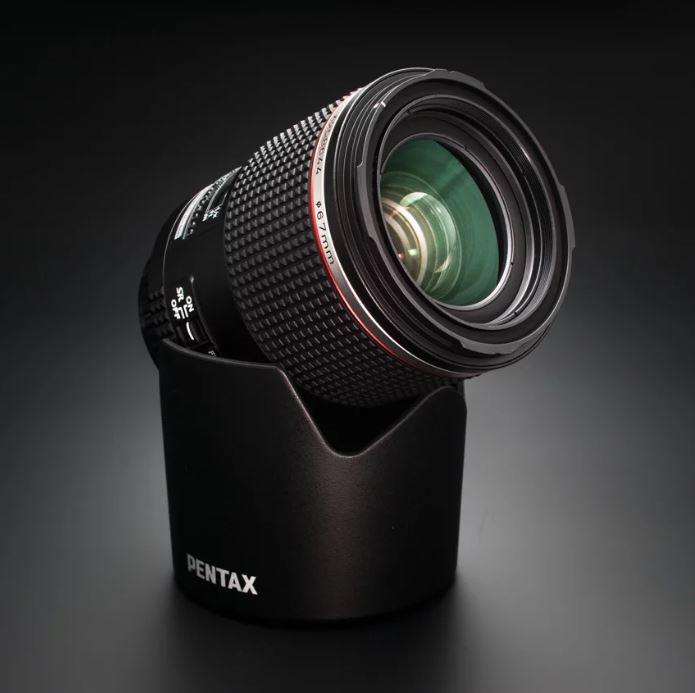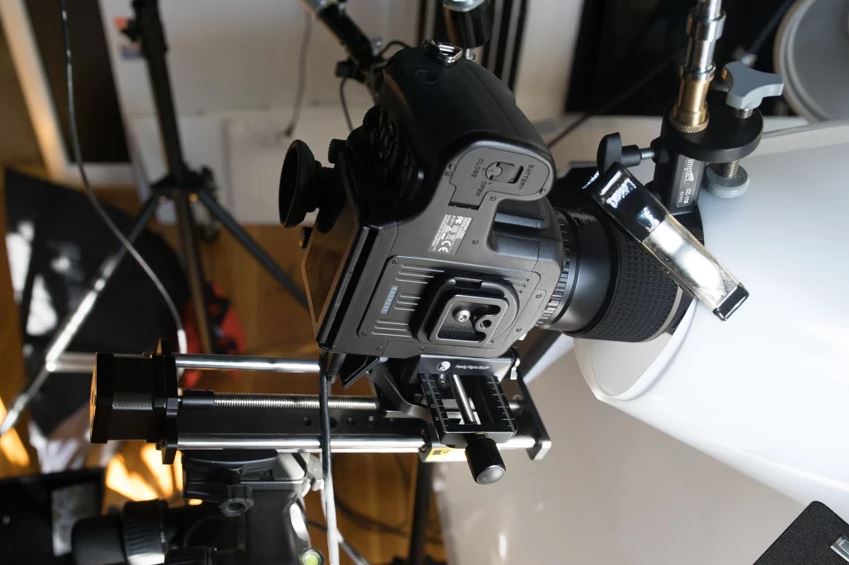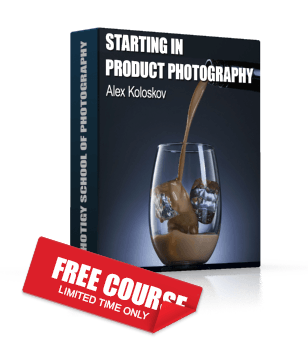Pentax 645Z Review by the Eye of a Jewelry Photographer
Pentax 645Z Review – Part 1
So before I start with the review, a bit of history on what I am comparing it to and where I come from.
I started doing my Jewelry photography using a Canon 5D MKIII and 1DX, with Canon L glass, the very good EF 100 f2.8 L IS Macro and the EF 185 f3.5 L
Even when I was happy with the results, I found myself with two issues, the noise on the black areas was a real problem, there was like a threshold where there was nothing to recover and just noise. And the glass refraction issues when stepping down the aperture over f11, I found the quality beyond f11 unacceptable for my standards.
So I was having to make way too many steps on the focus stacking, and also having areas with big bokeh, which means problems at the focus staking stage.
So, first, what I like about this Pentax 645Z, handling, construction, it seems a pretty solid camera, it is HEAVY, 54.9 oz, 1,555 Lb, but it still handles like a DSLR, and for a big guy like me, not a problem.
The tilting screen on the back is beautiful, has great contrast, the menus are easy to navigate and understand, although I would love if the used a wheel like Canon does instead of 4 individual buttons. You can take picture in its native format, DNG and TIFF, I use DNG, and they are about 75MB each, so a big and fast memory card is a must. They are 14 bits and have its own color profile embedded.
There is not a HUGE selection of glass available for this camera, but still quite a few to spend a fortune if you want them. Strictly talking about jewelry photography, there are only 2 lenses you can use, the Pentax 90mm f/2.8 D FA 645 Macro ED AW SR which is a new design and have shaking reduction, f2.8 which makes it also a nice portrait lens, but with a magnification factor of only 1:2.
Which makes it almost useless for small earrings and rings( about $4,500) and a not so new design Pentax smc FA 645 120mm f/4 Macro Lens 120mm, that it is 1:1, and a lot less expensive (about $1,500) but not so easy to find in stock, still in production though.
Then I purchased a Sony A7R which I believe is a fantastic camera, the higher resolution was very welcome for the big prints I usually make, more detail to work with at the retouching time, and is a very light and fast camera to operate, and there is certainly less noise on the dark areas and more to recover, I have to give that to Sony sensors, they are excellent. But, I was still limited by the glass, the Canon glass is excellent, but was not designed for a 36 MP sensor, the EF 185 have issues with chromatic aberration and fringe on strong highlights with sharp edges, and when needing more than 1:1 magnification, the power of resolve the sensor resolution of 36 MP is very questionable.
The EF 100 seems to hold well, but I can’t push it past f9 or I star seeing degradation caused by refraction. Also the RAE files from Sony use compression, a 36 MP file is about 25 MB, this is not very noticeable, but it creates some artifacts in the very dark areas, this is my observation, not a statement. You will see later some pictures comparing the 3 cameras I mentioned here
What was next, two options, using the same Sony A7R with a Cambo or a Nikon 810 also With a Cambo Ultima and some new glass, or the Pentax 645Z that was in the order of what I could afford. And same sensor as some of the most expensive cameras out there, and 50 MP. So after some research and downloading many RAW files from the Pentax 645Z from the internet, I decided to go for it.
The camera have 2 screws to mount it, one on the bottom, and one on the left side, so I purchased 2 plates from Really Right Stuff that fit perfectly and are specially designed for this camera and have a pin specially place in there so the plate does not rotate.
I use the camera on a Manfrotto camera stand with a Manfrotto geared head, and it is strong enough to handle the weight of the camera plus the lens. The camera can work with flashes on a speed of up to 1/125 ,that’s is it, no more, big shutter, I guess that is the problem, but it is a LOT less noisy and shaky as the Sony A7R is.
I have noticed no motion blur problems working at 1/125 with the Pentax at all. If you go over that speed, the camera will just not send the signal to the hot shoe, and the flash will not trigger. In fact, have a specific mode called X to work with flash where the speed is fixed to 1/125 and you can only change aperture and ISO.
Most of us work tethered, which is possible, but not ideal. The camera comes with a USB3 so transfer to the computer is fast, and you do not need to have a memory card inserted into the camera, in fact, it is faster if you do not have it. Pentax makes a software called Image Transfer 2, which lets you control the camera on every aspect, and capture to a certain folder that you can set to be an auto import folder for Lightroom.
The interface is pretty simple and the software does not even let you resize the window, but you can control every aspect of the camera from the software, which is more than what you can do with a Lightroom plugin I have tested this, and it is actually not bad or any slower than capturing with the A7R directly from Lightroom, with the difference that you can have a live view and with Lightroom you can’t have the live view. In average on my computer it takes about 5 seconds from taking the photo to see it full frame in Lightroom.
I have the camera connected to a big LCD on my studio wall, so I do not care much about the live view on the computer. Now here is a negative aspect of this camera I hope manufacturers hear the consumer and fix it. The live view has an horrendous auto gain issue, that may be with outdoors photography is not such a huge deal, with product photography where you might have high contrast between the background and foreground, it is a real problem, since you can see either the camera adjusting for the dark BG and totally overexposing you piece of jewelry, or exposing correctly the piece of jewelry and giving you a black hole looking background.
And there is no way to adjust it or turn it off. Now if you manage the modeling lights of your flashes to light the scene sort of evenly, and do not track power, then it will not affect you that much. Don’t take me wrong, it does not make the machine unusable, but it is pretty annoying. It also features focus peaking, and it is quite good to adjust fine focus, and you can also magnify the live view to do a fine focus. It also have a digital preview, which takes a small snapshot with the real ISO and aperture ignoring the auto gain, and which can be saved to the memory card if you want.
Most of the time I work with the camera connected to the Focus Stacking controller, so I do the fine focusing by actually moving the camera with the motorized rail, and I trigger the camera with the IR blaster that is connected to the controller, so I do not touch the camera at all.
– – AN EXAMPLE OF 100% CROP – –
The quality coming out of that Sony sensor it is outstanding, at ISO 100 the amount of detail on the shadows is just incredible. Many times we photograph things over black Plexiglas, which gives us a single layer reflection, and if you need you can adjust the exposure of the RAW and recover a lot of detail on that reflection if you happen to need it lighter, without suffering of much noise showing up in there.
– – AN EXAMPLE OF 100% CROP – –
In the past to do this with the Canon or A7R I had to repeat the shot with either more light or a higher ISO. In fact, in some test outside I took some photos where I exposed for the sky, the ground was just black, and I could not believe the amount of detail I was able to pull out of that shadows, something previously only doable by bracketing exposures with my Canon cameras or Sony A7R.
Jumping to what is probably the most important for us, the quality of the glass, because you can have a 300MP sensor, but if you do not have glass that can resolve it, you are just wasting money. The good news is, both macro lenses are excellent, and resolve the 50 MP sensor without issues. Both have excellent control of chromatic aberration and fringe is almost inexistent. I feel comfortable using both up to f19 or f20 although I still prefer staying under f11. It just f19 on these two lenses is as good as f9 on the Canon glass on the Sony A7R, and f11 on the Pentax glass is extremely sharp.
– – Pentax 645Z with 90mm Macro lens – –
The 90 mm lens is noticeable sharper than the 120, which makes it my favorite, unless I need to go 1:1 on something pretty small. Then I would use the 120. Which by the way, they are more like 75mm and 100mm equivalents in their field of view if what you are used with 35mm sensors.
Contrast and color rendition on both lenses is something really amazing, although I consider the newer 90mm to be better.
Something complicated, is to get extension tubes for these lenses, they are discontinued, so you have to resource to the used market and cross your fingers that they come up with new ones at some point.
Next part of this article will be about comparisons of both lenses with 1:1 crop images so you can compare quality by yourself.
About author: Victor Wolansky, a Professional Jewelry Photographer

Originally from Argentina, living in the US for the last 10 years.
Got my first DSLR back in 2009 and started experimenting with different techniques, looking for something that really makes me feel happy. Tried many kinds of photography, but the product photography is what I ended specializing into. Found Alex Koloskov website when we was just starting with the splash photography, and that was what drove me to buy several studio flashes, after that, jewelry was what captured most of my attention.
At the end of 2013 I decided to start commercially with the jewelry photography, since then it has become my passion, I’m a freak of details, I look for perfection, and I repeat a shot as many times I need to be happy with it. Won’t show it until I’m happy and proud of it.
My specialty are independent artist that makes one of a kind pieces, and that is super fun because I never get two pieces that look alike, so every time is a new challenge. I also have another job which is actually my main job, where I work as colorist and visual effects artist, making TV commercials.












